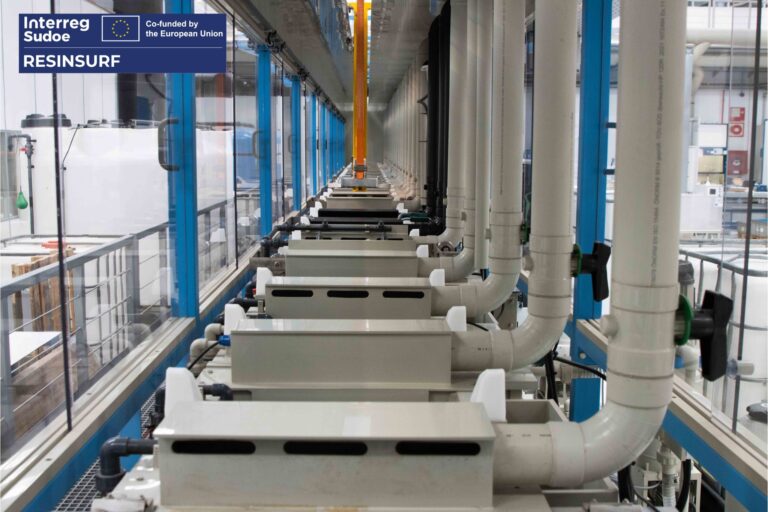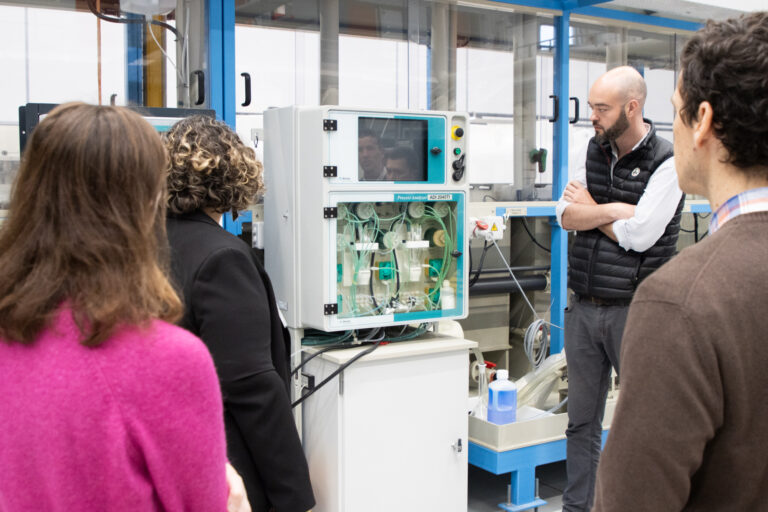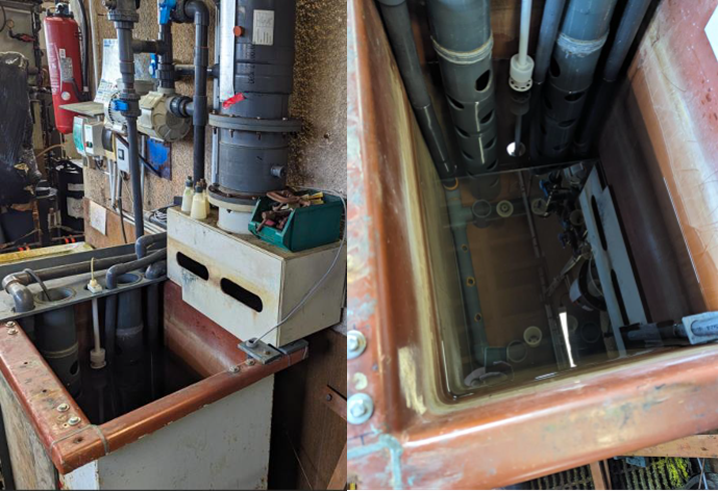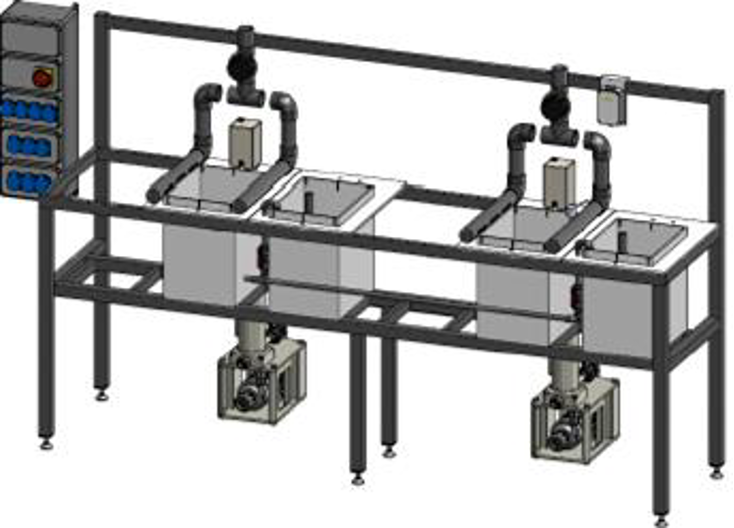




The RESINSURF project is implementing two important pilots to replace environmentally harmful chemicals with safer and more sustainable alternatives in the regions comprising the SUDOE space.
 Hard chrome is an electrolytic coating process that deposits a layer of metallic chromium on the surface of various materials. This treatment significantly improves the physical and chemical properties of the parts, providing high hardness, resistance to wear, abrasion, and corrosion. Traditionally, this process uses hexavalent chromium (Cr(VI)), a highly toxic and carcinogenic compound. Exposure to Cr(VI) can cause lung and paranasal sinus cancer, as well as respiratory, liver, and kidney problems.Hard chrome is widely used in various industrial sectors:
Hard chrome is an electrolytic coating process that deposits a layer of metallic chromium on the surface of various materials. This treatment significantly improves the physical and chemical properties of the parts, providing high hardness, resistance to wear, abrasion, and corrosion. Traditionally, this process uses hexavalent chromium (Cr(VI)), a highly toxic and carcinogenic compound. Exposure to Cr(VI) can cause lung and paranasal sinus cancer, as well as respiratory, liver, and kidney problems.Hard chrome is widely used in various industrial sectors:
 RESINSURF‘s Pilot 1 specifically focuses on the development and validation of a method for hard chrome without using hexavalent chromium (Cr(VI)). This ambitious project aims to find a viable and sustainable alternative to traditional hard chrome, especially for functional applications in the aeronautics and automotive sectors. The pilot not only seeks to replicate the properties of conventional hard chrome but also to eliminate the risks associated with the use of Cr(VI). The initiative is crucial in the current context, where environmental and occupational health regulations are increasingly strict. The development of this Cr(VI)-free hard chrome method could mark a before and after in the coating industry, offering a solution that combines technical excellence with environmental responsibility and workplace safety. RESINSURF is leading the way towards safer and more environmentally friendly industrial processes, without compromising the quality and performance of final products.
RESINSURF‘s Pilot 1 specifically focuses on the development and validation of a method for hard chrome without using hexavalent chromium (Cr(VI)). This ambitious project aims to find a viable and sustainable alternative to traditional hard chrome, especially for functional applications in the aeronautics and automotive sectors. The pilot not only seeks to replicate the properties of conventional hard chrome but also to eliminate the risks associated with the use of Cr(VI). The initiative is crucial in the current context, where environmental and occupational health regulations are increasingly strict. The development of this Cr(VI)-free hard chrome method could mark a before and after in the coating industry, offering a solution that combines technical excellence with environmental responsibility and workplace safety. RESINSURF is leading the way towards safer and more environmentally friendly industrial processes, without compromising the quality and performance of final products.
Participating in the development and implementation of this pilot are:
CIDETEC, INEOSURF, and the University of Pau.
The validation of Pilot 1 will be developed at:
Chrome Dur Industriel.
WHAT IS A PILOT?
A pilot, in the industrial context, is a small-scale version of a process or technology that is used to test and validate its effectiveness before implementing it on a large scale. It allows for the evaluation of the technical and economic viability of a new solution.